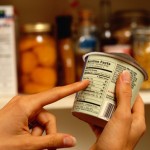 Creating food nutrition facts labels and other label copy to comply with the “Made in USA” standard is not as straightforward as it may seem. There are regulations that make clear when and where you can say “Made in the USA” on food labels. When ingredients are sourced and manufacturing takes place in the USA, the impact for food nutrition facts labels and other label copy is pretty straightforward. But what are the implications for food nutrition facts labels and other label copy if ingredients are foreign sourced but the formula is manufactured in the USA? What if the majority of food components are from the USA?
Creating food nutrition facts labels and other label copy to comply with the “Made in USA” standard is not as straightforward as it may seem. There are regulations that make clear when and where you can say “Made in the USA” on food labels. When ingredients are sourced and manufacturing takes place in the USA, the impact for food nutrition facts labels and other label copy is pretty straightforward. But what are the implications for food nutrition facts labels and other label copy if ingredients are foreign sourced but the formula is manufactured in the USA? What if the majority of food components are from the USA?
Clear and informative food nutrition facts labels“Made in USA” is considered to be a marketing claim that applies to products and food labels, advertising, and other promotional materials. FTC (and not FDA) regulates this U.S. origin claim to prevent deception and unfairness on food labels and packaging in the marketplace.
To include “Made in USA” or “Product of USA” on food labels, FTC has required that the product be “all or virtually all” made in the U.S. The term U.S. includes the 50 states, the District of Columbia, and the U.S. territories and possessions, such as Puerto Rico, Guam or the Mariana Islands.
When products contain foreign components but are packaged or assembled in the U.S. the concept of “substantial transformation” becomes relevant for food nutrition facts labels and other food label copy. U.S. “Substantial transformation” occurs when a new article emerges with a new name, use and character. For example, coffee beans that are imported from Brazil but ground, flavored and packaged in the U.S. can include “Product of USA” on the food label.
Here are some additional nuances to keep in mind when contemplating the “Made in USA” or “Product of USA” claim for your food labels. See FTC’s “Complying with the Made in USA Standard” for more information.
• “All or virtually all” means that all significant parts and processing that go into the product must be of U.S. origin. The product should contain no – or negligible – foreign content.
• The food product’s final processing must take place in the U.S.
• Consider the overall impression of the food labels or advertising. Symbols or images such as the U.S. flag or outline of the U.S. map may imply a made in the U.S. claim.
Separate and distinct regulations for food nutrition facts labels in Canada
The Canadian corollary to “Made in USA” and “Product of USA” is “Product of Canada” on food labels is covered by separate Canadian regulations. “Product of Canada” can be claimed on food labels if all major ingredients originate in Canada and non-Canadian ingredients total less than 2%. Canadian products of domestic and foreign materials may say “Made in Canada from imported ingredients” or “Made in Canada from domestic and imported ingredients” (but cannot claim “Product of Canada” on the food label) provided the last “substantial transformation” of the product took place in Canada. Other truthful Canadian processing claims such as “packaged”, “prepared”, “processed”, “refined”, “roasted”, “distilled”, “canned” may also be made.
About the author
 Karen C. Duester, President of Food Consulting Company
Karen C. Duester, President of Food Consulting Company
Karen Duester founded Food Consulting Company in 1993 to deliver nutrition analysis, and food nutrition facts labels, and food labels regulatory support to ensure 100% compliance with FDA regulations. With over 1,500 clients worldwide, Food Consulting Company functions as the virtual food label department for start-up and established food manufacturers, distributors, food importers, brokers, and restaurateurs. The company’s promise is to deliver accurate, timely service providing everything that’s needed to go from recipe to retail – all with the confidence that it’s done right. Company information and a free email newsletter are available at http://www.foodlabels.com.